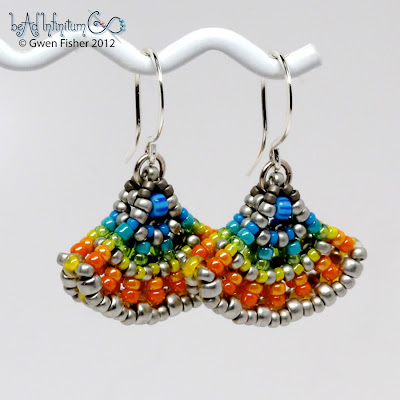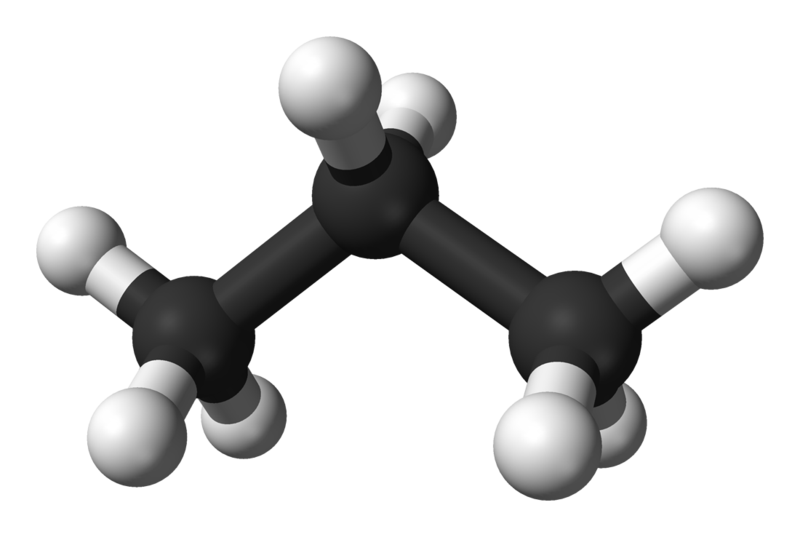Last summer, I realized I really needed some pink earrings because I have a lot of pink clothes, and no pink earrings. I designed this pair for myself, and I've been loving them ever since. If you've seen me since July, you've probably seen me wearing these earrings.
They're pretty small, just one inch tall without the ear wires, but they're big enough to be noticed. For the holidays, I made this pair for my sister with lots of dazzling Swarovski crystals.
This holiday season, I took some time to write an earring tutorial so you can enjoy making and wearing them too. The design is a bit challenging, but I show lots of photos and illustrations with detailed written explanations to help you with every step. Also, each earring uses just 3.5 feet of thread. So you know they weave up quickly, if you don't make too many mistakes!
I had a hard time coming up with a name for these, but I think they look a little like a Fleur de Lis.
That means "lily flower" or "iris" in French.
I love iris, and I have them growing in the front yard, black ones. Well, they're very dark purple.
I had so many iris in one a little planter next to the sidewalk that I separated them this Fall, and replanted iris all around the yard. I gave 15 plants to my neighbor and kept 15 for myself, and the spot I took them from is still full of young plants. I hope I get lucky and they bloom this spring.
One thing I like about these beaded irises is they're links. That means that you can add briolette drops at the bottom like I did with this pair. The long briolettes are natural faceted pyrite.
These Iris Drops also have natural amethyst and sapphire mixed with the Swarovski crystals to make them colored just like real iris,
minus the yellow. Upon further research, I found that most natural iris flowers have some yellow in them. Hmm. I don't own many yellow beads.... These are purple, blue, pink, silver.... Yum.
My earring tutorial does not explain how to wire wrap briolette beads, but you can learn a similar technique here, starting at time 2:31. It's not identical to what I did, but her technique is good, and it gives a very similar look.
Finally, I made one more pair with non-standard sizes of beads. The large beads in this pari are hand made dichroic glass that I bought years ago from Paula Radke. I had to add beads the border to make them fit, but I'm quite happy with how they turned out. The shape reminds me of little goddesses. Also, I really like the look of the dichroic glass with the bronze colored seed beads. You just can't match the flash of real dichro.
Want the tutorial? Find it here: Iris Drop Earring Tutorial Also, the last three pairs of earrings are for sale. Click on the photos to go to the listings. Thanks for looking.
They're pretty small, just one inch tall without the ear wires, but they're big enough to be noticed. For the holidays, I made this pair for my sister with lots of dazzling Swarovski crystals.
This holiday season, I took some time to write an earring tutorial so you can enjoy making and wearing them too. The design is a bit challenging, but I show lots of photos and illustrations with detailed written explanations to help you with every step. Also, each earring uses just 3.5 feet of thread. So you know they weave up quickly, if you don't make too many mistakes!
I had a hard time coming up with a name for these, but I think they look a little like a Fleur de Lis.
That means "lily flower" or "iris" in French.
I love iris, and I have them growing in the front yard, black ones. Well, they're very dark purple.
I had so many iris in one a little planter next to the sidewalk that I separated them this Fall, and replanted iris all around the yard. I gave 15 plants to my neighbor and kept 15 for myself, and the spot I took them from is still full of young plants. I hope I get lucky and they bloom this spring.
One thing I like about these beaded irises is they're links. That means that you can add briolette drops at the bottom like I did with this pair. The long briolettes are natural faceted pyrite.
These Iris Drops also have natural amethyst and sapphire mixed with the Swarovski crystals to make them colored just like real iris,
minus the yellow. Upon further research, I found that most natural iris flowers have some yellow in them. Hmm. I don't own many yellow beads.... These are purple, blue, pink, silver.... Yum.
My earring tutorial does not explain how to wire wrap briolette beads, but you can learn a similar technique here, starting at time 2:31. It's not identical to what I did, but her technique is good, and it gives a very similar look.
Finally, I made one more pair with non-standard sizes of beads. The large beads in this pari are hand made dichroic glass that I bought years ago from Paula Radke. I had to add beads the border to make them fit, but I'm quite happy with how they turned out. The shape reminds me of little goddesses. Also, I really like the look of the dichroic glass with the bronze colored seed beads. You just can't match the flash of real dichro.
Want the tutorial? Find it here: Iris Drop Earring Tutorial Also, the last three pairs of earrings are for sale. Click on the photos to go to the listings. Thanks for looking.



.svg/214px-Fleur_de_lys_(or).svg.png)




































